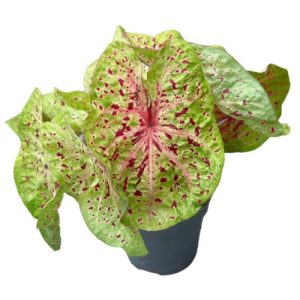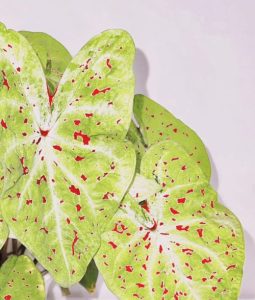- English
- Chinese
- French
- German
- Portuguese
- Spanish
- Russian
- Japanese
- Korean
- Arabic
- Irish
- Greek
- Turkish
- Italian
- Danish
- Romanian
- Indonesian
- Czech
- Afrikaans
- Swedish
- Polish
- Basque
- Catalan
- Esperanto
- Hindi
- Lao
- Albanian
- Amharic
- Armenian
- Azerbaijani
- Belarusian
- Bengali
- Bosnian
- Bulgarian
- Cebuano
- Chichewa
- Corsican
- Croatian
- Dutch
- Estonian
- Filipino
- Finnish
- Frisian
- Galician
- Georgian
- Gujarati
- Haitian
- Hausa
- Hawaiian
- Hebrew
- Hmong
- Hungarian
- Icelandic
- Javanese
- Kannada
- Kazakh
- Khmer
- Kurdish
- Kyrgyz
- Latin
- Latvian
- Lithuanian
- Luxembou..
- Macedonian
- Malagasy
- Malay
- Malayalam
- Maltese
- Maori
- Marathi
- Mongolian
- Burmese
- Nepali
- Norwegian
- Pashto
- Persian
- Punjabi
- Serbian
- Sesotho
- Sinhala
- Slovak
- Slovenian
- Somali
- Samoan
- Scots Gaelic
- Shona
- Sindhi
- Sundanese
- Swahili
- Tajik
- Tamil
- Telugu
- Thai
- Ukrainian
- Urdu
- Uzbek
- Vietnamese
- Welsh
- Xhosa
- Yiddish
- Yoruba
- Zulu
- Kinyarwanda
- Tatar
- Oriya
- Turkmen
- Uyghur

Ebe a na-ejikwa ha ma na n'èzí, calatium is an attractive plant distinguished by its vivid leaves. Caladium’s unusual appeal stems from the variety and vivid hues of its leaves—from green, crimson, pink to white, varied colors are entwined to provide a rich visual impact. Caladium’s growth patterns, however, suggest that its care strategies for various seasons need for particular attention—especially in winter. Caladium will become dormant when the temperature decreases, so winter care is very crucial.

Caladium ofe ọnwa
Caladium’s growing patterns and winter traits
Native to Brazil and Guyana in South America, caladium is a tropical and subtropical plant. Caladium grows very luxuriantly in warm circumstances as its native home has a warm and humid temperature. Caladium is particularly sensitive to temperature variations, however. Its development rate will slow down greatly and progressively go into a dormant condition when the temperature falls below 15 degrees Celsius. In winter, the temperature is low and the light time is limited; Caladium’s development usually stops and calls for particular care to preserve its health.
Njikwa okpomọkụ
One of the main elements influencing Caladium’s care is the winter temperature management. Calamus grows best between 18℃ to 26℃, hence low temperatures in winter might have a major effect on the plant. Calamus may wither, become yellow or even fall off if it is in a long-term climate below 15℃. Consequently, especially care should be given to provide calamus a cozy winter growing habitat.
A na-enye ya ime ụlọ ime ụlọ: ọ ga-enye ya, ọ na-adụ ya ọdụ ka ọ debe ya n'abalị, ọkachasị ngwaọrụ ndị ọzọ nwere ike inye aka idozi ya.
Ekwesịrị ịhapụ Calis na windo na ọnụ ụzọ yana mpaghara ndị ọzọ nwere ike ibute site na oyi oyi. Wedalata okpomọkụ gbara ọkụ na osisi, guss oyi nwere ike imerụ ahịhịa.
Ikpukpu mkpuchi ma ọ bụ akwa akwa na-echekwa ihe ọkụkụ site na okpomoku dị ala na mgbede oyi ma ọ bụrụ na etinye calamus n'èzí ma ọ bụ na mbara ihu.
Njikwa ọkụ
Plants cannot photosynthesize without light, so it is their fundamental requirement. Calamus’s photosynthetic efficiency is thus lowered in winter when the daylight hours are limited and the light intensity is somewhat feeble. In this circumstance, the caladium’s leaves are likely to wilt and become dull. Consequently, maintaining caladium also depends much on light control in winter.
Bugharịa caladium ka ọnọdụ zuru ezu, dị ka mpio nke ndịda-ihu, iji bulie ọkụ dị n'okirikiri n'oge oyi. A na-enye ndụmọdụ ọkụ na-eme ka a ga-eji ọkụ mee ihe ọ bụrụ na ọkụ n'ime ime ezughi oke iji dobe oge awa 8 kwa ụbọchị na ogologo oge ndụ.
Steer clear of strong direct light even if the sunshine is gentler in winter as it could burn caladium’s foliage. Calcium should therefore be avoided even in winter from being positioned near a window with direct sunlight. To change the light brightness, curtains or blinds are ideal.
Iwu nke iru mmiri na ịgbara mmiri
Caladium like a humid climate, although in winter the plant’s evaporation rate slows down and water requirement lowers as well. Water collection at the roots and even root rot might result from watering still done at the frequency during the growth stage. Consequently, the frequency and volume of watering in winter must be changed in line.
Shouldgbara mmiri kwesịrị ịdị na-adịkarị obere oge oyi ka agba ọka calamus na-eme dikwa na mkpa dị obere. Ọtụtụ mgbe, mgbe ala kpọrọ nkụ, ọ bụ naanị obere mmiri dị mkpa iji gbochie ịkwatu.
Jikwaa mmiri: oge ọ bụla ị na mmiri, tụlee nchịkwa mmiri ma gbaa mbọ hụ na ala na-anọ mmiri mmiri na-enweghị mmiri mmiri. Ọtụtụ mmiri nwere ike ibute nsogbu maka mgbọrọgwụ iku ume, nke ga-eme ka mgbọrọgwụ ire ere.
Ijide ikuku ikuku: akwukwo calamus na-ahọrọ mmụba ikuku ikuku ma ọ bụ na-ebigbọ mmiri n'oge oyi. Udide ma ọ bụ nke e jiri mmiri mmiri fesa gburugburu osisi nwere ike inyere gị aka ịnọgide na-enwe ikuku ikuku. Zọpụrụ nke na-etinye osisi n'akụkụ ọkpọ ọkpọ ọkpọ iji zere ikuku akọrọ.
Ndị na-ahụ maka ala na nri
Winter is the dormant season of the color leaf calamus; plant metabolic activity declines and nutritional requirement also declines. It is advised not to fertilize too much during this time; otherwise, it is simple to ruin the fertilizer and compromise the plant’s health.
Ọtụtụ mgbe, na oge oyi, akwukwo ahihia calamus nwere ike ịkwụsị fertilizing ruo mgbe ọhụrụ buds na-amalite itolite n'oge opupu ihe ubi nke afọ na-esote.
Nọgide na-enwe ezigbo ala dị mkpa ka dị mkpa ọ bụrụgodị na mgbọrọgwụ nke akwụkwọ osisi mara mma na-ebelata n'oge oyi. Ala kwesịrị ekwesị ga-eme ka ala ahụ dị mma ga-abawanye ma nyere aka zere mmebi nke mgbọrọgwụ usoro site na enweghị oxygen.
Nlekọta nke akwukwo akwukwo ahihia mara nma n'oge udu mmiri
Caladium nwere agba ga-abụ ihe dị oke mma na oge oyi, atụmatụ onwe onye nke osisi iji merie ọnọdụ na-adịghị mma site na iwetulata metabolic ọnụ. Mmepe a na-emepụta nke akwụkwọ coladium mara mma na-akwụsị n'oge a, ya mere akwụkwọ ahụ nwere ike iji nwayọ. Nke a bụ physical physical phymena pụtara ime ka ịchafu ego ike. Omume ziri ezi nwere ike ime ka a na-acha akwụkwọ pladium nke ọma nke ọma na-agafe ike dormant ma malitegharịa na-eto na oge opupu ihe ubi nke afọ na-esote.
A naghị atụ aro ka ịkpụ akwụkwọ nke akwụkwọ curadium na-acha odo odo n'oge oyi. Ọ bụrụgodị na akwụkwọ ụfọdụ nwere ike ịkpọnwụ, ndị a eleghị anya na-enye ụfọdụ nchekwa maka ihe ọkụkụ ahụ ma mee ka ọ na-eme n'oge oyi.
Ijikwa nkwụsi ike gburugburu ebe obibi: ebe gburugburu ebe obibi dị iche iche n'oge oyi, akwụkwọ caladium nwere obere mmegharị na gburugburu ya. Iji gbochie mgbanwe gburugburu ebe obibi na-eme ka ọkụ ahụ, gbalịa idobe okpomọkụ nke ime oge, iru mmiri, na ìhè na-adịkarị mmachi.
Though winter is a dormant season, you still need routinely monitor the caladium’s condition, particularly with regard to changes in the roots and leaves. Once an issue like root rot or aberrant yellowing of leaves is discovered, it should be addressed gradually.
Na-akwado maka ndụ otu ugboro n'oge oyi na-agwụ
The caladium will likewise awaken from hibernation when winter finishes and the temperature progressively increases. Normal care should be progressively reintroduced at this point to be ready for the caladium’s explosive spring development.
Jiri nwayọ wulite oge calodium iji mee ka ọ gbanyụọ photosyshesis mgbe oge opupu ihe ubi bịarutere.
Normal watering and fertilization should be progressively resumed when new buds emerge to provide enough nutrients to maintain the plant’s development.
Timely repotting: Should the caladium’s roots occupy the pot, you may spring-time repot it to provide extra growing area and supply new soil to foster good development.

Calatium
Ya na akwukwo ahihia ya calatium gives the space a distinctive ornamental impact; yet, its winter maintenance calls for particular attention. By means of suitable temperature control, appropriate light management, scientific watering and humidity control, and careful fertilizer and soil management, the caladium may effectively survive the winter dormant period and recover fresh vigor in the spring of the next year. Good winter maintenance not only preserves the caladium’s health but also provides a strong basis for its springtime fast expansion.



